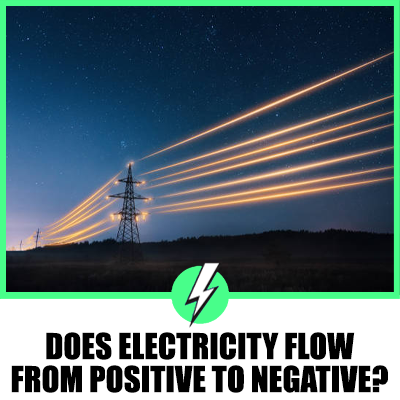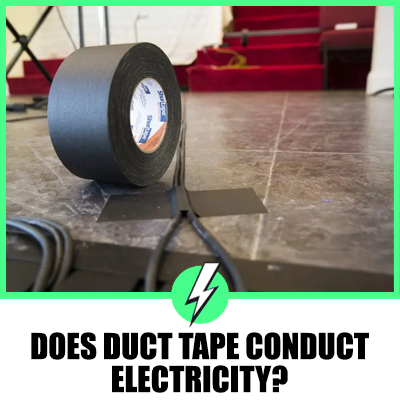Does Electricity Flow From Positive to Negative? An Enlightening Look
The Basics: Does Electric Current Flow from Positive to Negative?
Yes.
According to conventional current, electric current does flow from positive to negative.
This convention, grounded in the era before we discovered the electron, has stood the test of time.
Back then, the consensus was that electric fluid, or current, flowed out from the positive terminal and into the negative terminal.
Even after it was found that electric current was actually the movement of negatively charged electrons, this convention remained.
And so, we still consider the direction of conventional current to flow from positive to negative.

Contents
Why Does Energy Flow from Negative to Positive?
Here’s where things get a bit more complex.
In reality, the physical movement of electrons, which carry energy, is from negative to positive.
This phenomenon is often referred to as electron flow.
Why does this happen?
Well, electrons are negatively charged. As a result, they’re attracted to the positive terminal of a power source and repelled by the negative one.
This drives them to move from the negative terminal to the positive terminal, transporting energy with them.
So, although conventional current goes from positive to negative, the energy flow — driven by the actual movement of electrons — proceeds from negative to positive.
Which Direction of Current Flows from Positive to Negative?
If you’re asking this question, you’re probably wondering if there’s a straight answer.
In fact, it depends on whether we’re considering conventional current or electron flow.
As we’ve established, conventional current flows from positive to negative. This is the direction used in circuit diagrams and calculations.
But if we’re discussing the actual movement of electrons (electron flow), the direction reverses. It’s from negative to positive.
How Does Electricity Actually Flow?
Picture a pipe filled with water.
A difference in pressure between two ends of the pipe causes the water to flow.
In a similar vein, the flow of electricity, or current, is driven by a voltage difference, also known as a potential difference, between two points in a circuit.
This potential difference propels electrons to move — and it’s their movement that constitutes electric current.
Remember, though, while electrons physically move from negative to positive, we define conventional current as flowing from positive to negative.
Insights From Online Discussions: Unearthing Valuable Nuggets
Turning to the World Wide Web, there’s a treasure trove of discussions on this riveting topic.
A helpful article on Leonics distinguishes between conventional current and electron flow using simple-to-understand analogies.
Douglas Krantz provides an interesting take on electrical flow direction, drawing a parallel with water flow.
A compelling thread on Electronics Stack Exchange delves into whether current flows from positive to negative or vice versa.
The responses underline the tug-of-war between conventional current and electron flow.
A Quora thread asks why electricity flows from negative to positive, prompting answers that stress the pivotal role of electrons.
An educational YouTube video visualizes this concept, providing a boon for visual learners.
An answer to a student query on Byju’s elucidates why conventional current flows from positive to negative while electron flow proceeds from negative to positive.
And an AgWeb article highlights the flow of electricity in vehicles, bringing the theory to life.
Unraveling the History of Electric Current
To truly grasp the confusion around the direction of electric current, we need a brief history lesson.
Benjamin Franklin formalized the concept of electric current in the 18th century.
At this time, we hadn’t discovered electrons.
Franklin proposed that electricity involved the flow of a positive charge, leading to the positive-to-negative convention.
The electron wasn’t discovered until the late 19th century. By then, the positive-to-negative convention was firmly established in scientific literature and practice.
The scientific community chose to stick with the convention rather than upend centuries of work.
The Last Word
In summary, we conventionally describe electric current as flowing from positive to negative.
This convention harks back to a time before we discovered electrons.
In terms of actual electron flow, though, the direction is from negative to positive.
This nuanced understanding is crucial in many fields, from physics and electronics to vehicle mechanics.
By drawing from scientific literature, online discussions, educational videos, and real-world applications, we can enhance our grasp of this foundational aspect of our electrified world.
As our knowledge of electricity continues to expand, we look forward to the thrilling discoveries that await.





